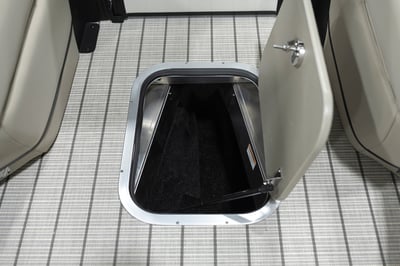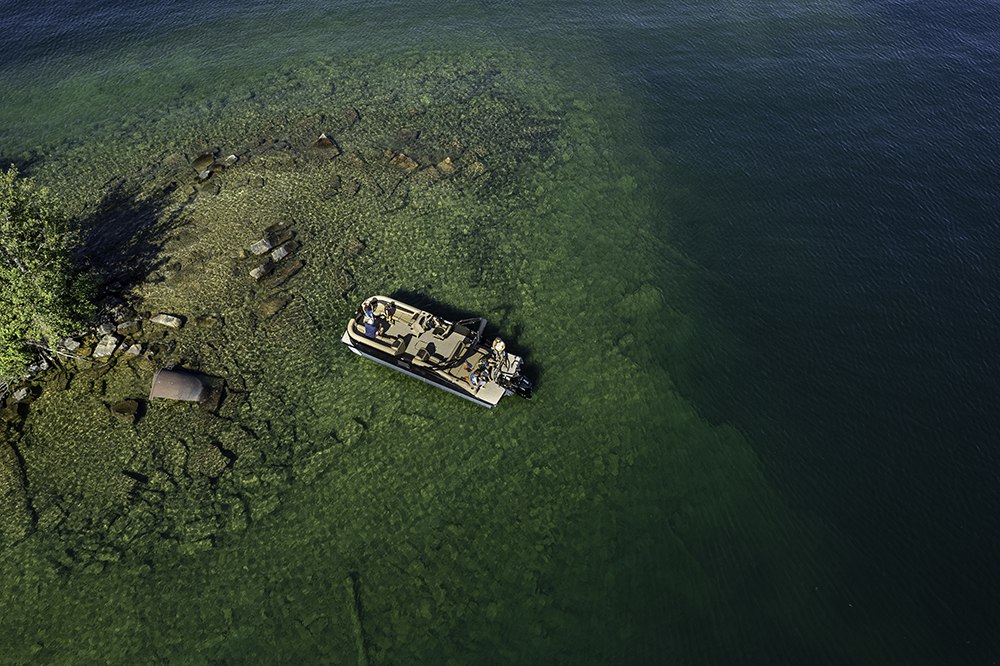How to Anchor a Boat: Step by Step Guide
Over the winter Joe decided to take his family to the local boat show just to browse the latest selection of this year’s lineup. As if getting out of the house on a cold February day wasn’t fun enough, Joe set his sights on what would become the family’s new favorite pastime.
He put a deposit down on a pontoon boat and the countdown to summer was on. Although he didn’t expect to buy a boat, visiting the boat show changed his mind after he got to see all the different types of boats under one roof.
As the months passed and the snow started to melt, the excitement grew amongst Joe’s family in anticipation for delivery day. Joe had done his research and understood what the lead time would be when he initially ordered the boat from his local dealer.
When the day finally arrived, Joe was prepared with a delivery day checklist that he printed out and brought with him to the dealership. He spent time with his dealer and met the service team so they knew who was calling when he needed an appointment.
After a thorough walkthrough of the boat and pontoon trailer, Joe decided to purchase the last bit of gear that he needed from the dealership. He already had the necessary safety equipment, fenders, and dock lines at home, but what he needed now was an anchor and a lesson in how to use it.
If you can relate to Joe then you’re in the right place. I’m going to teach you how to properly anchor your pontoon boat in this article. This step-by-step guide can be used for any type of boat, but the anchor selection may vary.
Types of Anchors
Let’s consider Joe’s situation for a second. He had never owned a boat before and had started from square one which meant he didn’t know the first thing about anchors. What is Joe’s best resource for this type of information?
The most helpful place Joe could source the appropriate anchor from is his dealer. The type of anchor you choose should be based on the seafloor in the location you plan on anchoring in and the size of your boat.
There’s not a one size fits all approach to choosing an anchor but with those two pieces of information, your dealer can help you make the best decision for your situation. For example, I’ve got a 27’ pontoon boat that I park at a sandbar that ranges from 3’-6’ deep.
I keep two sand augers in my center toon storage and these work like a charm for lounging at the sandbar. When I throw anchor in the deeper part of the lake that consists of muck and seaweed, I use a heavy Richter anchor instead.
If you’re having a hard time figuring out which anchor to buy, check out our list of the most popular anchors for recreational boating. I also recommend talking to your dealer about which option is right for you.
Anchor Storage
Designated anchor storage is wildly underrated. Having a place to tuck the anchor away is very helpful especially when you have a boat full of people. Leaving an anchor out on the boat floor can be a hazard and will take up a chunk of space.
Keep this in mind if you’re still shopping for a boat, storage is gold. Barletta has built anchor storage directly into the bow that comes equipped with a Danik hook to make connecting the anchor rode to the boat easy.
This type of storage also makes the anchor easily accessible. It’s helpful to be able to grab your anchor quickly upon arrival at your parking destination. Just the same, you will want to be able to stow the anchor away quickly and get moving once the boat is afloat.
Having a designated storage spot that’s large enough for the anchor you choose will help keep the mess to a minimum. When you pull an anchor off of the seafloor, you should expect to have some dirt and debris come up with it.
You don’t want to toss a dirty anchor on the floor or furniture as muck and marine growth can stain and leave behind an odor. Make sure to rinse the anchor before stowing it away. Having a designed storage spot will help contain any stuck-on gunk or odor.
Barletta offers dedicated in-floor anchor storage on Lusso and Corsa models

Anchor Rode
The anchor rode is the line that connects the anchor to the boat. A common type of anchor rode that you’ll see for recreational boats is a rope chain combination. Some boats use all rope, but I’ve always gravitated towards this combo.
A good rule of thumb is to make sure your anchor rode is twice the length of your boat. This will vary if you plan to anchor in extremely deep areas, you may need more line. Too short and you’re at risk of the anchor becoming uprooted. Too long and the boat will not stay contained in the area you want to be parked.
Talk to your dealer when choosing which anchor to purchase. They will be able to give you advice on the appropriate type of anchor rode for your setup. Once you have the right anchor and it’s connected to the anchor rode, it’s time to hit the water.
Cast Anchor
It always helps to have an extra set of hands when anchoring a boat. As you pull the boat up to your favorite lounging spot, make sure your co-captain knows either how to anchor the boat or how to jump behind the wheel and navigate as you cast the anchor.
You can anchor the boat on your own, you will just want to prep in advance. If it’s just you handling this process, get the anchor out of storage ahead of pulling into your parking spot. This will give you a head start since you will be behind the helm until it’s time to cast the anchor.
Next, point the bow of the boat into the wind and locate which direction the current is coming from. Head up to the bow and grab your anchor. Keep the anchor rode in one hand and throw the anchor into the current so that the boat will naturally float away from the anchor.
Let your anchor rode, or line, out until the anchor has hit the bottom and catches on the seafloor. You will want to keep a small amount of slack in the line so that when the waves hit the boat it doesn’t pull up on the line and uproot the anchor.
Next, connect the anchor rode to the boat. On a pontoon, you can attach the line to a cleat or use a Danik hook to clip it onto a loop on the front of the toon. On any other type of boat, the cleat will work just fine.
Ryan with Barletta Boats shows us how to anchor a boat
Pull Anchor
If you’re ready to head to the dock it’s time to pull the anchor. I like to start my boat first and keep it in neutral so that when the anchor comes up, I can react quickly and pull the boat out of the parking space.
Head to the bow of the boat and locate the anchor rode. I like to keep the line attached to the boat as I pull the anchor up just in case I accidentally drop it back in the water. You can detach the line before you pull the anchor up, it’s really up to preference.
As the anchor comes up out of the water, make sure to clean any muck or marine life off before you pull it into the boat. Giving it a couple of dunks back in the water should clear anything off but you might need to pull seaweed off by hand.
Lastly, disconnect the anchor rode from the boat and put it all back into its designated storage area. I like to make sure the line goes neatly back into the storage compartment so that I’m not stuck with a tangled-up mess the next time I go to anchor the boat.
Anchors Aweigh
The secret to the perfect anchor job is having the right equipment. There isn’t a one size fits all approach to anchors and one type can have many different uses. Knowing ahead of time what the seafloor is like in your area will help you narrow down which one to choose.
When finding a spot to anchor for the day, be conscious of those around you. My rule is, if you were parked there first, you have the right-of-way. Meaning, I will not crowd a boat by anchoring too close to them.
That’s because an anchored boat will still move even if it’s just slightly from side to side. Knowing that you should respect other boaters’ space especially if they were anchored first.
Once you get the hang of anchoring your boat, try teaching your co-captain how to do it. Having someone on board to cast the anchor while you navigate the boat makes the process easier.



.png?width=700&name=LC%20(1).png)